I’ve wandered through Joshua Tree in every season, and honestly, the timing changes everything. The best time to visit Joshua Tree is spring (March to May) or fall (October to November) when the weather feels just right for desert adventures. These months bring cooler days, wildflowers in spring, and, thankfully, fewer people than the winter rush.
Summer? It’s brutal. Temperatures can shoot past 100°F, so hiking or climbing gets risky fast. If you want to see those wild Joshua trees and catch some stars without melting or elbowing through crowds, spring or autumn just makes sense.
Some of my best moments here happened on quiet spring mornings or during those crisp, golden autumn afternoons. Whether you’re into hiking, snapping photos, or just soaking in the desert vibes, timing your trip really does matter.
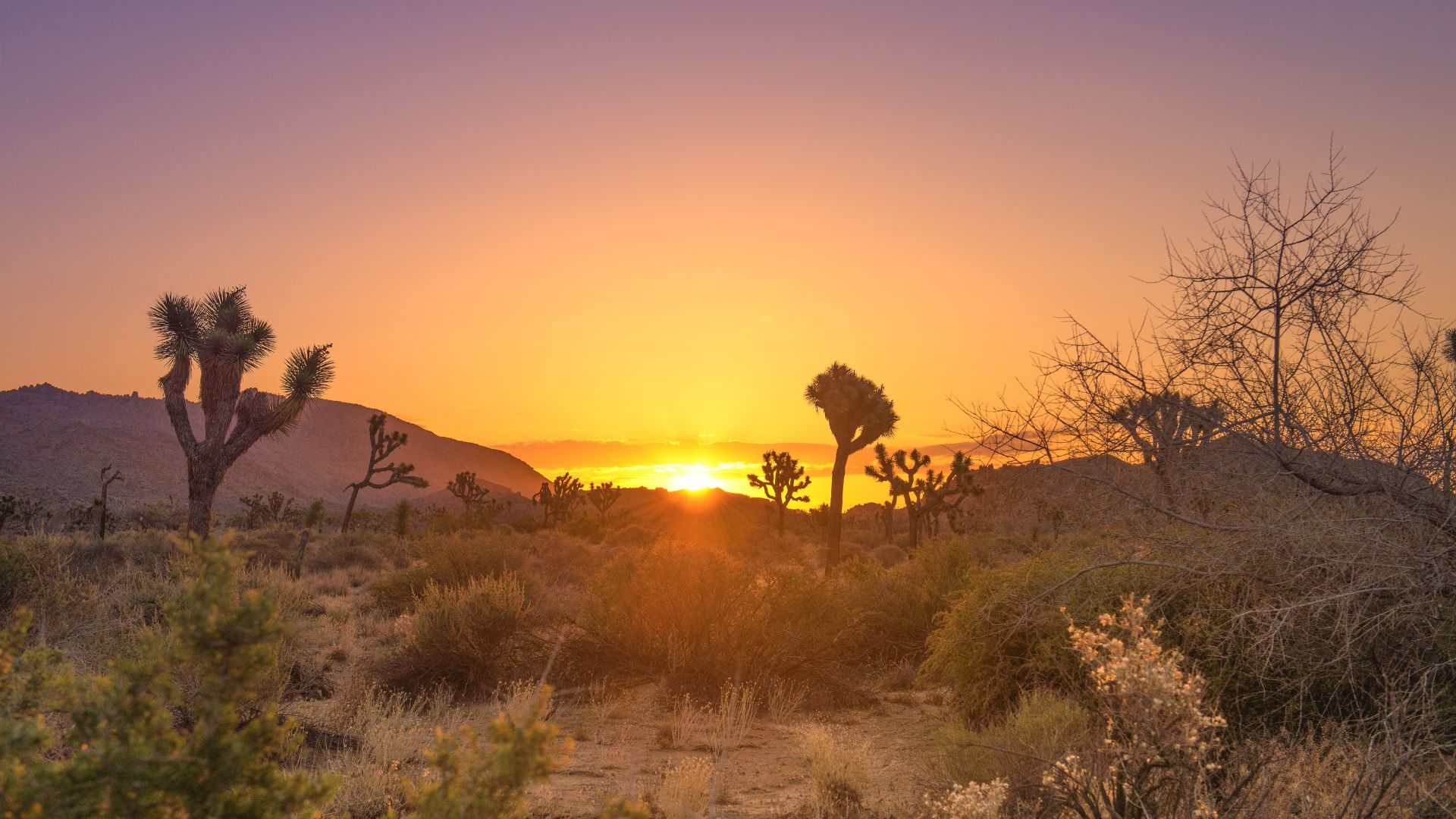
Understanding the Best Seasons to Visit Joshua Tree
Spring and autumn give you the best weather for exploring Joshua Tree National Park. Summer’s heat and winter’s cold nights can make things tough, especially if you want to hike or camp.
Spring Weather and Pleasant Temperatures
Spring—March through May—has always felt perfect to me. Daytime highs usually land between 60°F and 80°F (16°C to 27°C). Nights get cooler but still work for camping or stargazing.
Wildflowers pop up everywhere, splashing color across the desert. Clear skies and gentle breezes make hiking and climbing way more comfortable. Spring gets busy, but it’s not as packed as winter holidays.
Here’s what spring usually looks like:
| Month | Avg High Temp | Blooming Wildflowers | Crowd Levels |
|---|---|---|---|
| March | 70°F (21°C) | Moderate | Moderate |
| April | 75°F (24°C) | High | Higher |
| May | 85°F (29°C) | Decreasing | Moderate |
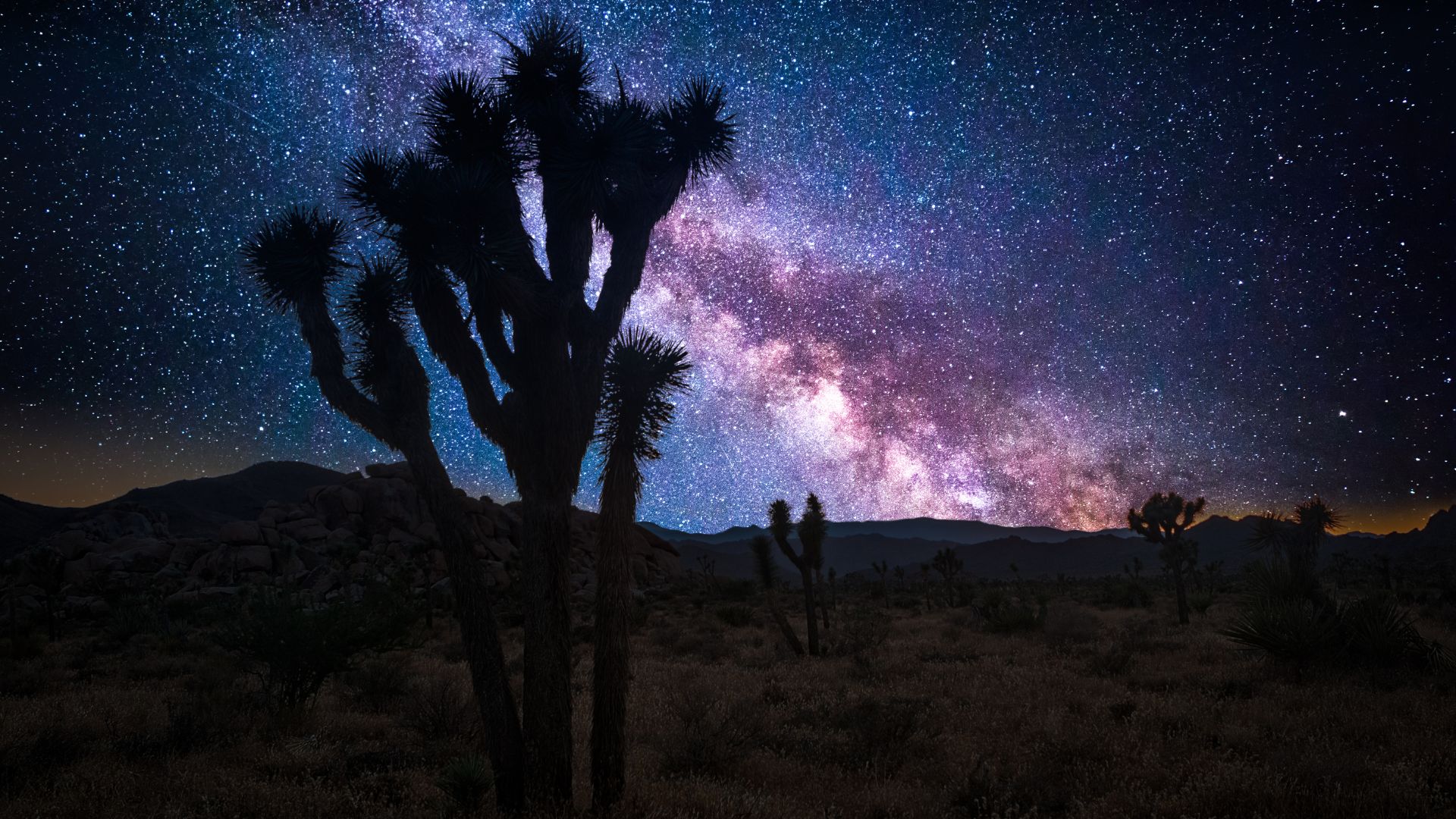
Autumn Days and Fall Foliage
Autumn, from late September to November, is another sweet spot. The heat finally lets up, with days between 70°F and 85°F (21°C to 29°C) and chilly nights.
Joshua Tree isn’t really about fall leaves, but some shrubs and trees do show off a bit of color. Cooler days mean you can actually enjoy hiking, climbing, or snapping photos.
Skies clear up, which makes stargazing even better. Crowds do come back with the pleasant weather, but it’s not as overwhelming as spring. If you’re sensitive to heat, autumn’s a great balance.
Why to Avoid Summer’s High Temperatures
Summer, especially June through August, just gets wild. Extreme heat regularly pushes past 100°F (38°C). I always warn friends—don’t even think about serious hiking or climbing during the day.
Sure, evenings cool off a bit, but most folks just can’t enjoy the park in that kind of heat. Animals hide, wildflowers vanish, and visitors disappear.
If you want to camp or do anything active, skip summer. Winter brings its own challenges, with freezing nights, so you’ll need to prep for that. For me, spring and autumn are the only times I’d really recommend.
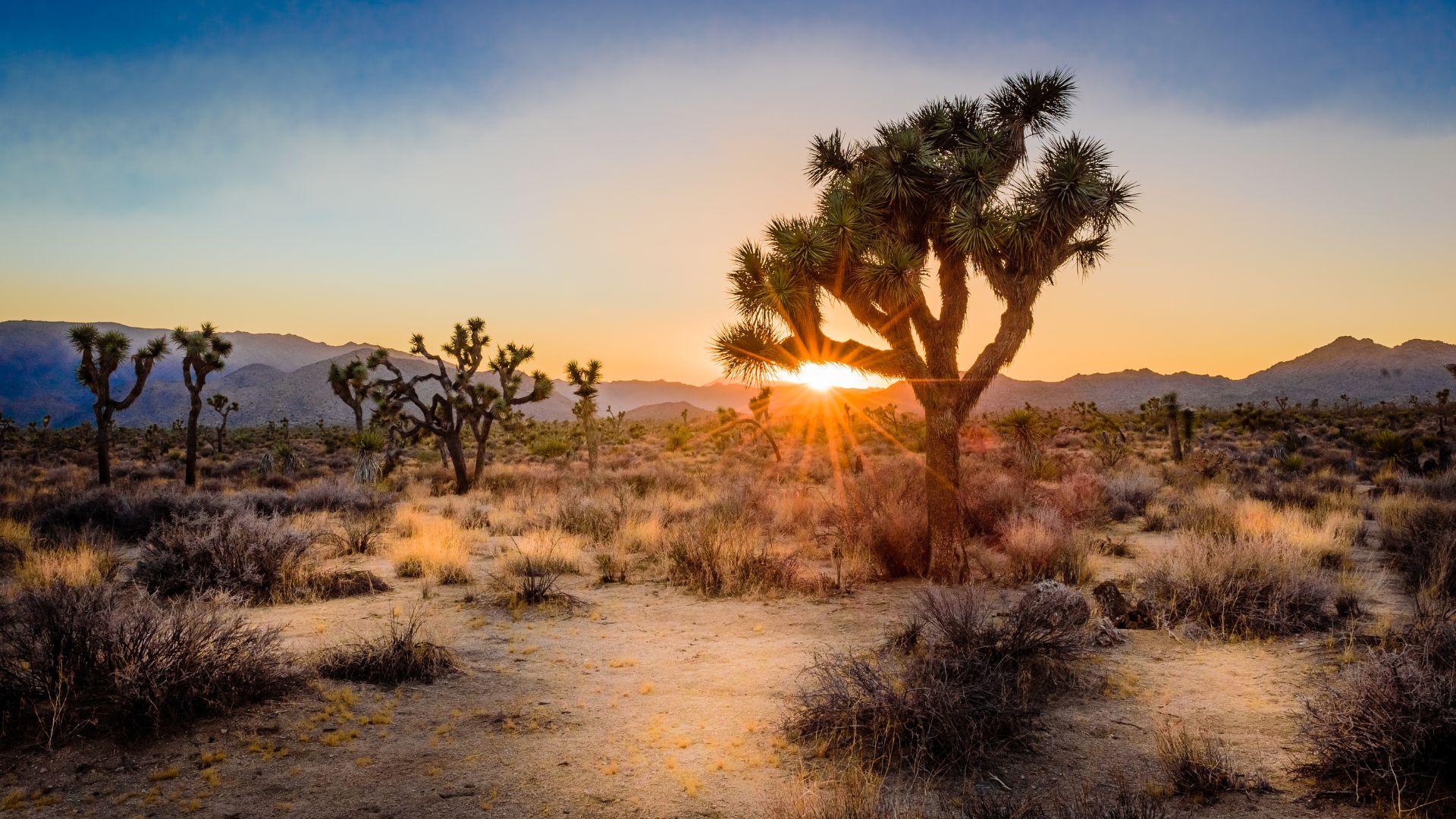
Exploring Joshua Tree National Park During Prime Months
Spring and autumn just make Joshua Tree shine. With temps ranging from 70–85°F, you can hike, climb, or check out desert blooms without worrying about the weather.
Outdoor Activities in Spring and Autumn
During these months, just about every outdoor activity feels better. Walking, climbing, biking—it all becomes way more fun with the milder temps.
Ranger programs pop up more often too. Guided walks, talks, and stargazing events are a real highlight.
Photographers love the soft light in the mornings and late afternoons. Rock climbers get grippy, dry air. Campgrounds like Hidden Valley and Jumbo Rocks feel inviting, not punishing. In late fall, crowds thin out a bit, which is a nice bonus.
Popular Spring & Autumn Activities
| Activity | Why It’s Great Now |
|---|---|
| Hiking | Cooler temps, wildflowers |
| Rock Climbing | Comfortable grip, less heat |
| Camping | Pleasant nights, clear skies |
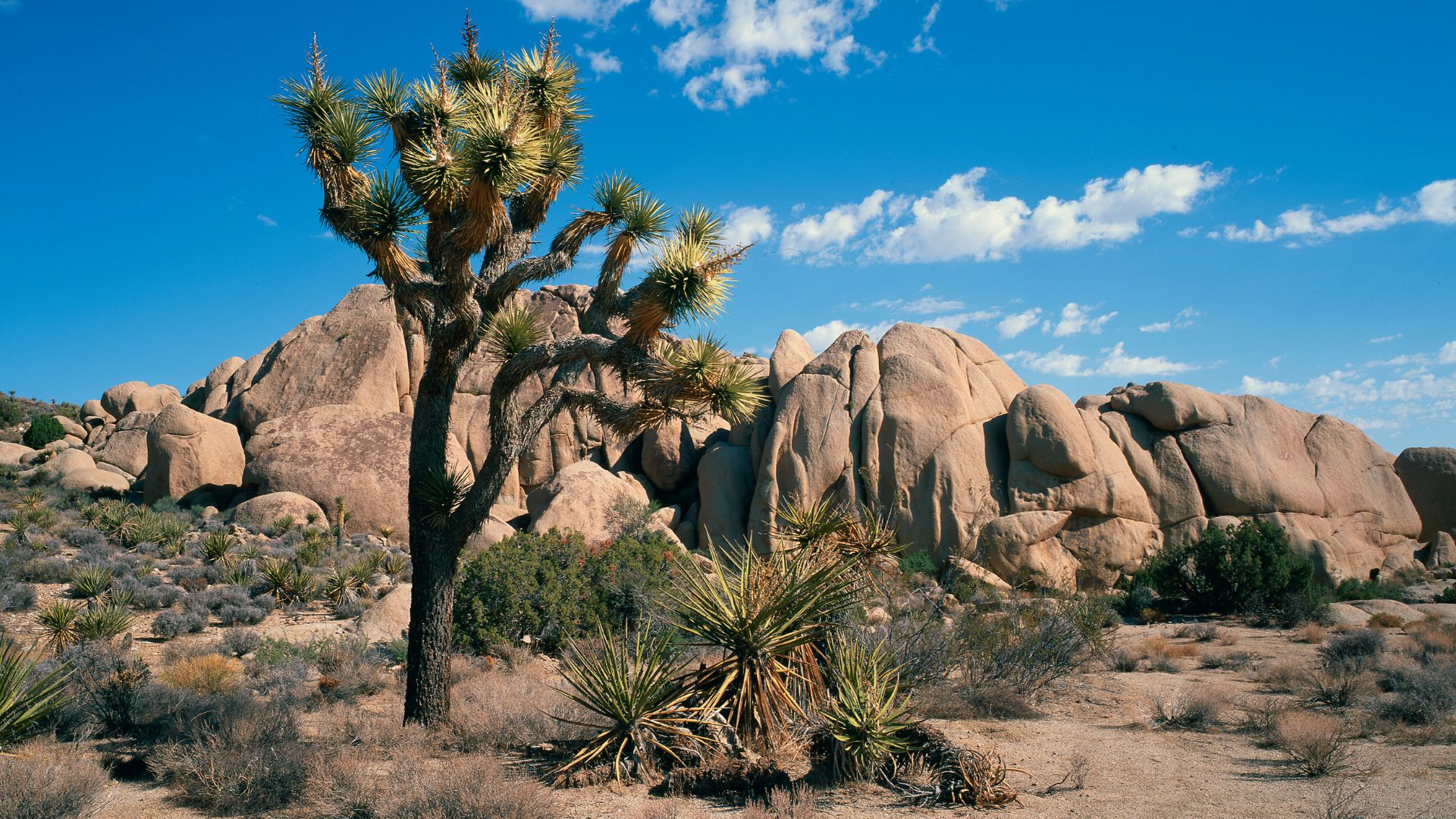
Hiking Trails and Rock Formations
Some of the park’s best hiking trails just feel safer and more enjoyable in March–May and October–November. Hidden Valley Trail is a favorite—a quick 1-mile loop through wild rocks and Joshua trees. Barker Dam Trail works great for families.
For longer hikes, Ryan Mountain Trail or the tough Lost Palms Oasis Trail are solid picks. Cooler weather makes those uphill climbs way less brutal.
Joshua Tree’s rock formations are legendary. Skull Rock, Arch Rock, and Intersection Rock are easy to reach and look especially dramatic when the sun’s low.
Wildlife and Blooming Trees
Spring means Joshua trees and a bunch of other desert plants burst into bloom. You’ll see clusters of white flowers on the Joshua trees, plus wildflowers like marigolds and lupines.
Wildlife gets more active too. Lizards dart around, jackrabbits hop by, and if you’re lucky, you might spot a bighorn sheep. Birds flock to water spots like Barker Dam.
Bloom season depends on how much rain the desert gets, so some years are better than others. Even if you miss the peak, there’s something magical about Joshua trees against those massive rocks.
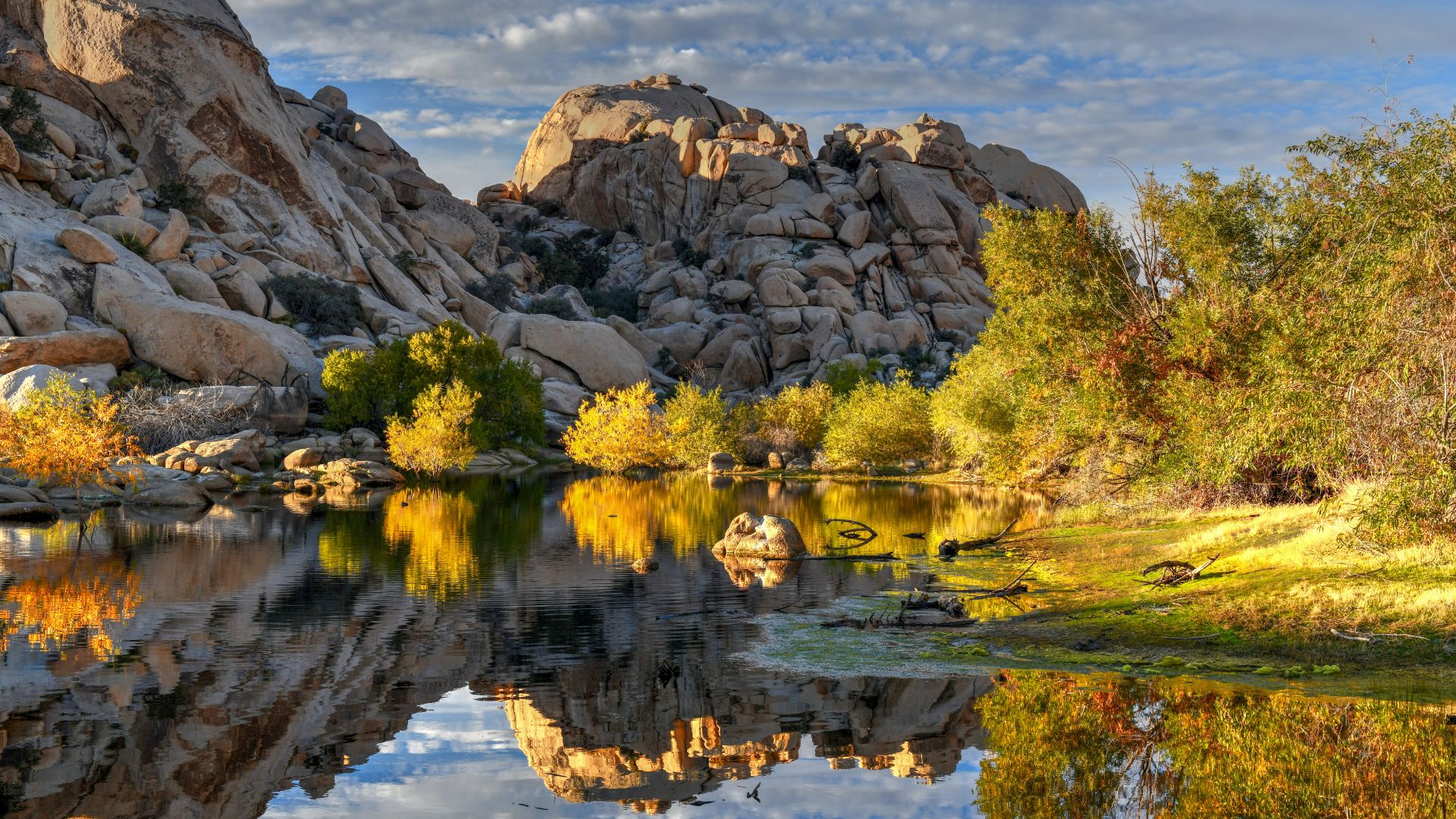
Planning Your Visit: Weather Patterns and Crowds
When I plan a Joshua Tree trip, I always check the weather and think about crowds. Mild days and fewer people make everything more enjoyable—especially if you’re here to hike, camp, or watch the stars.
Seasonal Weather in Joshua Tree
Joshua Tree’s climate swings between scorching summers and pleasant spring and autumn months. In spring (March–April) and autumn (October–November), highs usually stick between 70°F–85°F (21°C–29°C). Nights drop to 40°F–55°F (4°C–13°C), which feels pretty good for sleeping outdoors.
Summer is just hot, plain and simple. Temps often hit 100°F (38°C) or more. I stay away from midday hiking then—it’s just not worth the risk. Winters are milder, with highs from 50°F–65°F (10°C–18°C), but nights can get icy.
Unlike places like northern Japan, where you get humid summers and snowy winters, Joshua Tree stays dry all year. It barely rains, so I usually count on sunshine.
Best Months for Fewer Visitors
Crowds peak in spring, especially March and April, when wildflowers bloom and the weather’s perfect. Holiday weekends and school breaks get packed. If I want some space, I’ll aim for early autumn (October–November) or even winter, when things quiet down a lot.
Summer is practically empty, thanks to the heat. If you can handle early mornings or late evenings, you’ll have the park mostly to yourself. I try to arrive before 8 am to beat any crowds, no matter the season.
For quicker entry, I usually go for the North Entrance in Twentynine Palms or the South Entrance off Interstate 10. The West Entrance gets slammed, especially on weekends. Weekday trips and avoiding midday help me find quieter trails and viewpoints.

Comparing Other National Parks and Regional Experiences
Joshua Tree really stands out with its surreal desert landscape and those perfect spring and autumn days. If you’re a fan of comparing parks or planning a bigger road trip, it’s worth knowing how Joshua Tree stacks up against places like Yosemite—or how the seasons change the whole vibe across the U.S.
How Joshua Tree Compares to Yosemite National Park
The contrast between Joshua Tree and Yosemite always surprises me. Joshua Tree gives you endless sun, wild trees, and epic rock formations. Spring and fall are the best times here—dry, sunny, and comfortable.
Yosemite, though, is all about towering granite cliffs, waterfalls, and forests. Late spring is prime for Yosemite’s waterfalls, while early autumn brings cooler temps and fewer people. Summer in Yosemite means crowds everywhere, but in Joshua Tree, summer just means “stay inside.”
| Joshua Tree | Yosemite | |
|---|---|---|
| Best time | Spring, Autumn | Late Spring, Fall |
| Climate | Desert, dry | Mountain, varied |
| Main appeal | Rock climbing, stargazing, desert trees | Waterfalls, hiking, sequoias |
Experiencing National Parks Across Seasons
Seasons really change the whole experience at different parks. In deserts like Joshua Tree, spring and fall are the sweet spots. Summer? Just skip it. Wildflowers in spring make everything pop.
Mountain parks like Yosemite shift even more. Snow hangs around into spring, which feeds the waterfalls. Summer pulls in the crowds, and autumn cools things down and clears people out. Winter brings snow sports and calm, but some trails close.
If you want a more relaxed trip, I’d go for late spring or early autumn for most parks. Weather’s usually nice, and you won’t be fighting crowds—whether you’re into deserts, forests, or mountains.

What to Expect: Local Culture and Unique Sights Near Joshua Tree
Joshua Tree isn’t just about rocks and trees. You’ll find a quirky mix of nature, local spots, and even a bit of Japanese influence if you look for it. There are also some unique places to stay, like hot springs and ryokan-inspired inns not far from the park.
Influences of Japanese Culture on Travel Experiences
Joshua Tree’s mostly known for its desert views, but I’ve noticed little touches of Japanese culture around town. Some cafes and shops go for a minimalist look inspired by Japanese design. A few restaurants serve up Japanese or Asian-fusion dishes, often using local ingredients in creative ways.
Art galleries sometimes show off pieces with Japanese flair—think calligraphy or pottery. Occasionally, I’ve stumbled on meditation or tea ceremonies at wellness centers. These details add a calming, unexpected twist to the Joshua Tree experience.

Hot Springs and Ryokan-Style Stays Nearby
Desert Hot Springs sits just a short drive from Joshua Tree. I love how this little town has built its reputation around natural hot mineral waters.
You’ll find several resorts with heated pools and spa facilities. After a long hike, there’s nothing quite like sinking into those mineral-rich waters—your muscles will thank you for it.
Some inns here lean into ryokan-inspired design. Think tatami mats, futon bedding, and tranquil gardens that invite you to slow down.
A few places even offer onsen-style communal baths. It’s a surprising blend: Japanese hospitality meets the calm, sunbaked California desert.
If you’re after a peaceful spot that feels both authentic and a little unexpected, these stays really deserve a look.

